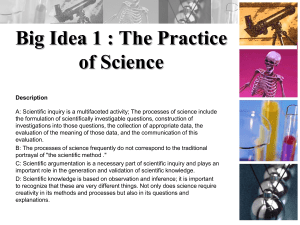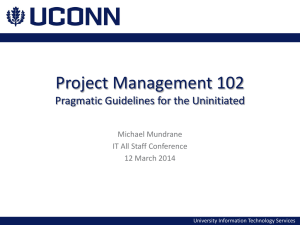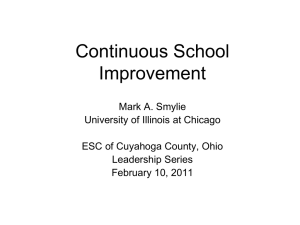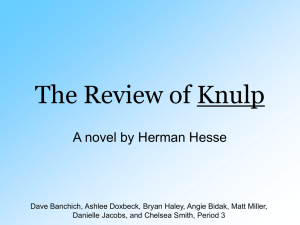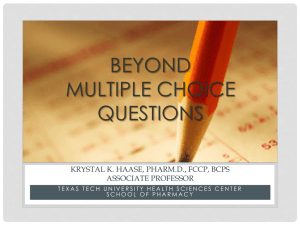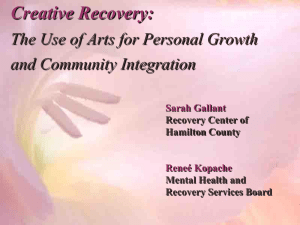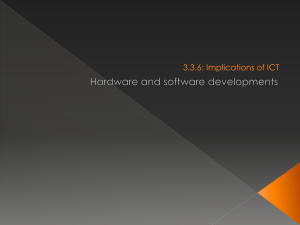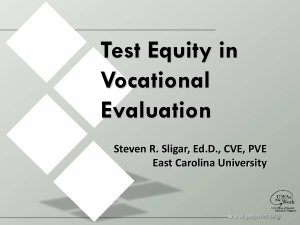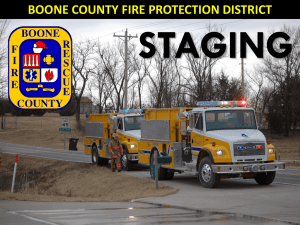Theatre Spaces - Plantsbrook School
advertisement
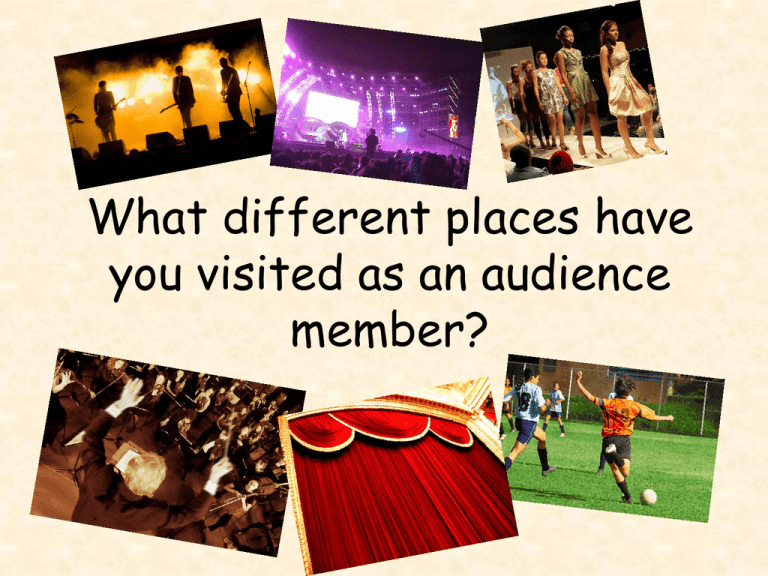
What different places have you visited as an audience member? Introduction to Performance Space Learning Objectives: •To learn the 6 different types of performance space. •To discover the pro’s and con’s of each performance space. •To practically explore how to stage a performance ‘in the round’. Types of Performance Space • There are six main types of Performance Space, these are: In-the-Round Thrust Proscenium Arch End On Traverse Promenade • Make notes on the pro’s and con’s of each one as we discuss each one. Notes • In your notes you need to include: – A brief sketch of the staging type. – The KEY points about the staging type. – You will then discuss pro’s and con’s of each one with a partner. – Also write down any types of plays that you think would work well in this type of space. In-the-Round The acting area is located in the middle of the space and the audience sits all around the acting area. There can be one, two three, four or more entrances/ exits. In-the-Round Above is one of the first in-the-round theatres built in the UK, it is located in Scarborough. It is the sister theatre of The New Vic Theatre in Newcastleunder- Lyme. Think • What are the pro’s and con’s of this staging type? • What problems may be encountered? • What kinds of performances would work well on this stage? • What effect might this stage have on the audience? Thrust The stage is rectangular and the audience surrounds the stage on three sides. The audience directly faces the stage from each of the three sides. Thrust Above is a photo of one of the most famous thrust stages in the country, Shakespeare’s Globe Theatre in London. Occasionally theatres will adapt their Proscenium Arch stage into a Thrust stage by adding an extra piece on the front – this is called an Apron. Think • What are the pro’s and con’s of this staging type? • What problems may be encountered? • What kinds of performances would work well on this stage? • What effect might this stage have on the audience? Proscenium Arch • The audience sits in front of the stage, usually in straight rows. The audience views the stage as if looking at the action through a picture frame. Proscenium Arch This is still the most recognized form of theatre space. The Arch is the frame surrounding the front of the stage. Think • What are the pro’s and con’s of this staging type? • What problems may be encountered? • What kinds of performances would work well on this stage? • What effect might this stage have on the audience? End On This is similar to a proscenium arch stage. The stage is at one end and the audience face it directly. In this type of stage there is no arch around the edge of the stage to ‘frame’ it. Think • What are the pro’s and con’s of this staging type? • What problems may be encountered? • What kinds of performances would work well on this stage? • What effect might this stage have on the audience? Traverse The acting area is down the middle of the space. The audience sits facing the acting area from two sides. Traverse It is very unlikely that there are any theatres that are purpose built in this format, but it is definitely still used; usually to remind audiences that they are watching a play. Think • What are the pro’s and con’s of this staging type? • What problems may be encountered? • What kinds of performances would work well on this stage? • What effect might this stage have on the audience? Promenade • In promenade productions the audience moves around to each location scene by scene. • Sometimes the audience is looking at the action and sometimes they are part of it. Think • What are the pro’s and con’s of this staging type? • What problems may be encountered? • What kinds of performances would work well on this stage? • What effect might this stage have on the audience? Little Red Riding Hood • In groups you are going to perform the story of Little Red Riding Hood in the round. • Consider: – What effect do you want to have on the audience? – What problems do you need to consider and how are you going to overcome them? Review • What stage are you at with your performance? • What problems have you encountered and how did you overcome them? • What do you need to do next lesson to complete this work? Think about... • Using still images • Sound effects • Making sure that every side can see SOMETHING interesting. Targets • • • • • • • • To participate more in lessons To research more at home To rehearse in my own time To practise my physical skills To practise my vocal skills To share more creative ideas To take the lead in group situations To think more creatively

